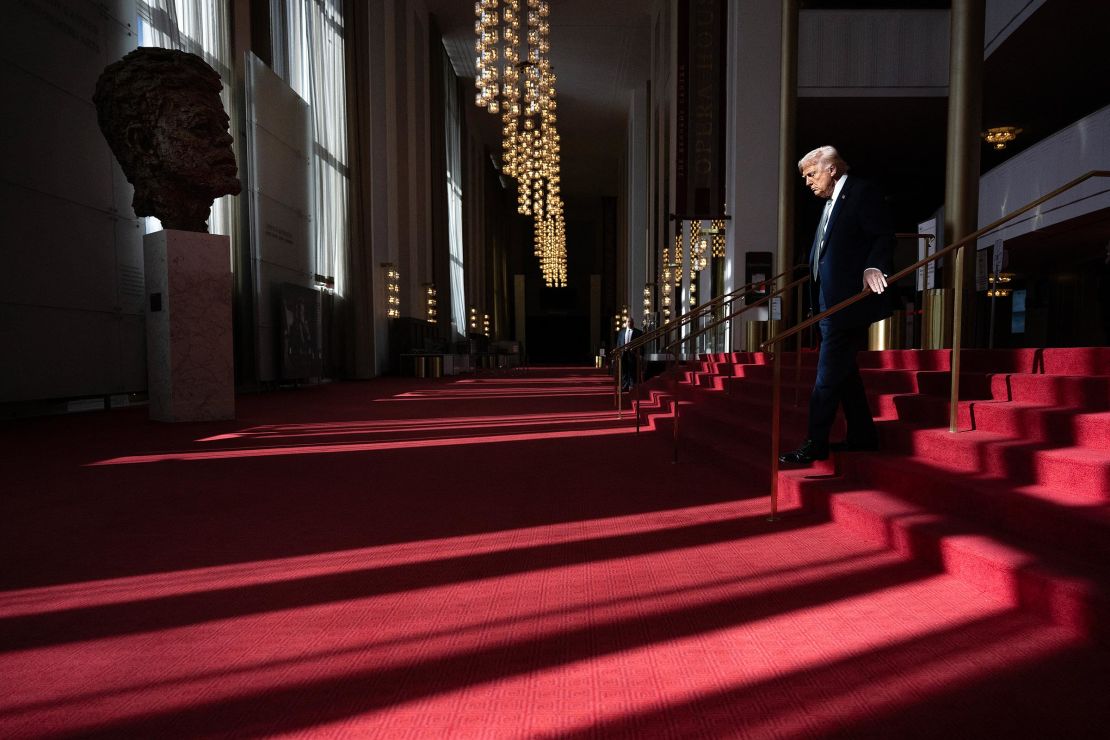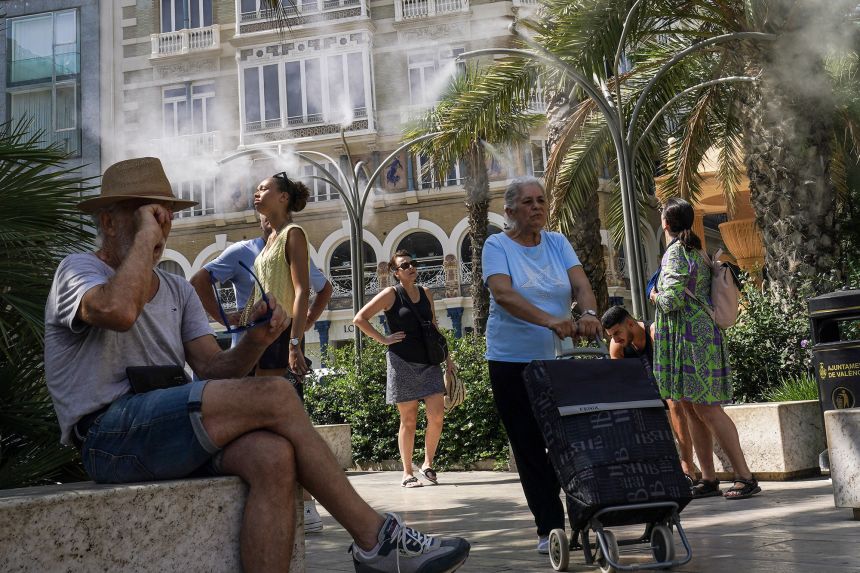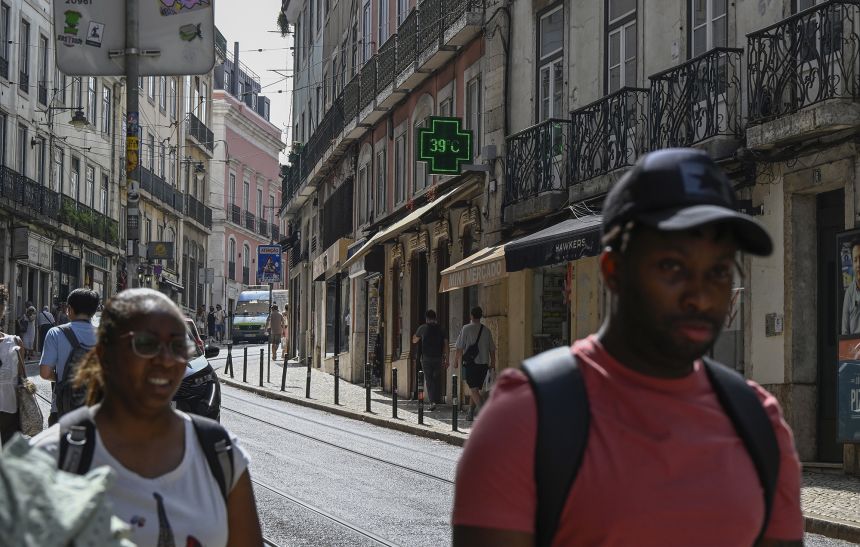CNN
—
They know all about glory days on the Kop – the fabled terrace that is the spiritual home of fans of Liverpool – England’s Premier League champions.
But they’re more used to legends like Kenny Dalglish or Mohamed Salah banging in goals than political cries for help. So, it was surreal to watch alongside thousands of middle-aged Brits as Bruce Springsteen bemoaned America’s democracy crisis on hallowed footballing ground.
“The America that I love … a beacon of hope and liberty for 250 years, is currently in the hands of a corrupt, incompetent and treasonous” administration, Springsteen said at Anfield Stadium on Wednesday night.
The Boss’s latest warnings of authoritarianism on his European tour were impassioned and drew large cheers. But they did seem to go over the heads of some fans who don’t live in the whirl of tension constantly rattling America’s national psyche.
Liverpudlians waited for decades for Springsteen to play the hometown of The Beatles, whose “I Wanna Hold Your Hand” set his life’s course when he heard it on the radio as a youngster in New Jersey.
Most had a H-H-H-Hungry heart for a party. They got a hell of a show. But also, a lesson on US civics.
“Tonight, we ask all of you who believe in democracy and the best of our American experiment to rise with us, raise your voices, stand with us against authoritarianism and let freedom ring!” Springsteen said.
His European odyssey is unfolding as Western democracies are being shaken again by right-wing populism. So, his determination to engage with searing commentary therefore raises several questions.
What is the role of artists in what Springsteen calls “dangerous times?” Can they make a difference, or should stars of entertainment and sports avoid politics and stick to what they know? Fox News polemicist Laura Ingraham once told basketball icon LeBron James, for instance, that he should just “shut up and dribble.”
Springsteen’s gritty paeans to steel towns and down-on-their-luck cities made him a working-class balladeer. But as blue-collar voters stampede to the right, does he really speak for them now?
Then there’s this issue that Springsteen emphatically tried to answer in Liverpool this week: Does the rough but noble America he’s been mythologizing for 50 years even exist anymore?
How Springsteen and Trump mine the same societal ground
Trump certainly wants to bring the arts to heel – given his social media threats to “highly overrated” Springsteen, Taylor Swift and other superstars and his takeover of the Kennedy Center in Washington. Any center of liberal and free thought from pop music to Ivy League universities is vulnerable to authoritarian impulses.
But it’s also true that celebrities often bore with their trendy political views, especially preaching at Hollywood awards ceremonies. Springsteen, however, has been penning social commentary for decades. And what’s the point of rock ’n’ roll if not rebellion? Rockers usually revolt in their wild-haired youth, rather than in their mid-70s, but desperate times call for desperate measures.
Oddly, given their transatlantic dialogue of recent weeks, Trump and Springsteen mine the same political terrain – globalization’s economic and spiritual hollowing of industrial heartlands.

“Now Main Street’s whitewashed windows, And vacant stores, Seems like there ain’t nobody, Wants to come down here no more,” Springsteen sang in 1984 in “My Hometown” long before Trump set his sights on the Oval Office.
The White House sometimes hits similar notes, though neither the Boss nor Trump would welcome the comparison. “The main street in my small town, looks a heck of a lot worse than it probably did decades ago before I was alive,” Trump’s press secretary Karoline Leavitt said rather less poetically in March.
Political fault lines are also shifting. In the US and Europe, the working class is rejecting the politics of hope and optimism in dark times.
And the Democratic politicians that Springsteen supported – like defeated 2004 nominee John Kerry, who borrowed Springsteen’s “No Surrender” as his campaign anthem, and former President Barack Obama – failed to mend industrial blight that acted as a catalyst to Trumpism.
Shifting political landscapes in England and the US
There are warning signs in England too. The Boss’s UK tours often coincided with political hinge moments. In the 1970s he found synergy with the smoky industrial cities of the North. In his “Born in the USA” period, he sided with miners clashing with Prime Minister Margaret Thatcher. A new BBC documentary revealed this week he gave $20,000 in the 1980s to a strikers’ support group.
Liverpool, a soulful, earthy city right out of the Springsteen oeuvre is a longtime Labour Party heartland. But in a recent by-election, Nigel Farage’s populist, pro-Trump, Reform Party overturned a Labour majority of nearly 15,000 in Runcorn, a decayed industrial town, 15 miles upstream from Liverpool on the River Mersey. This stunner showed Labour’s working class “red wall” is in deep peril and could follow US states like Ohio in shifting to the right as workers reject progressives.
Labour Cabinet Minister Lisa Nandy, whose Wigan constituency is nearby, warned in an interview with the New Statesman magazine this month that political tensions were reaching a breaking point in the North.
“People have watched their town centers falling apart, their life has got harder over the last decade and a half … I don’t remember a time when people worked this hard and had so little to show for it,” Nandy said, painting a picture that will be familiar to many Americans.
In another sign of a seismic shift in British politics last week, Reform came a close third in an unprecedented result in a parliamentary by-election in a one-time industrial heartland outside Glasgow. Scotland has so far been immune to the populist wave – but the times are changing.
Still, there’s not much evidence Trump or his populist cousins in the UK will meaningfully solve heartland pain. They’ve always been better at exploiting vulnerability than fixing it. And Trump’s “big, beautiful bill” would hurt the poor by cutting access to Medicaid and nutrition help while handing the wealthy big tax cuts.
“When conditions in a country are ripe for a demagogue, you can bet one will show up,” Springsteen told the crowd in Liverpool, introducing “Rainmaker” a song about a conman who tells drought-afflicted farmers that “white’s black and black is white.” As the E Street Band struck up, Springsteen said: “This is for America’s dear leader.”
Springsteen has his “Land of Hope and Dreams.” But Trump has his new “Golden Age.” He claims he can “Make America Great Again” by attacking perceived bastions of liberal power like elite universities and the press, with mass deportations of undocumented immigrants and by challenging due process.
Springsteen implicitly rejected this as un-American while in Liverpool, infusing extra meaning into the lyrics of “Long Walk Home,” a song that predates Trump’s first election win by a decade: “Your flag flyin’ over the courthouse, Means certain things are set in stone. Who we are, what we’ll do and what we won’t.”
Sending fans into a cool summer night, the Boss pleaded with them not to give up on his country.
“The America I’ve sung to you about for 50 years now is real, and regardless of its many faults, is a great country with a great people and we will survive this moment,” he said.
But his fight with Trump for America’s soul will go on. The contrast would be driven home more sharply to Americans if he tours on US soil at this, the most overtly politicized phase of a half-century-long career.
Perhaps in America’s 250th birthday year in 2026?




























